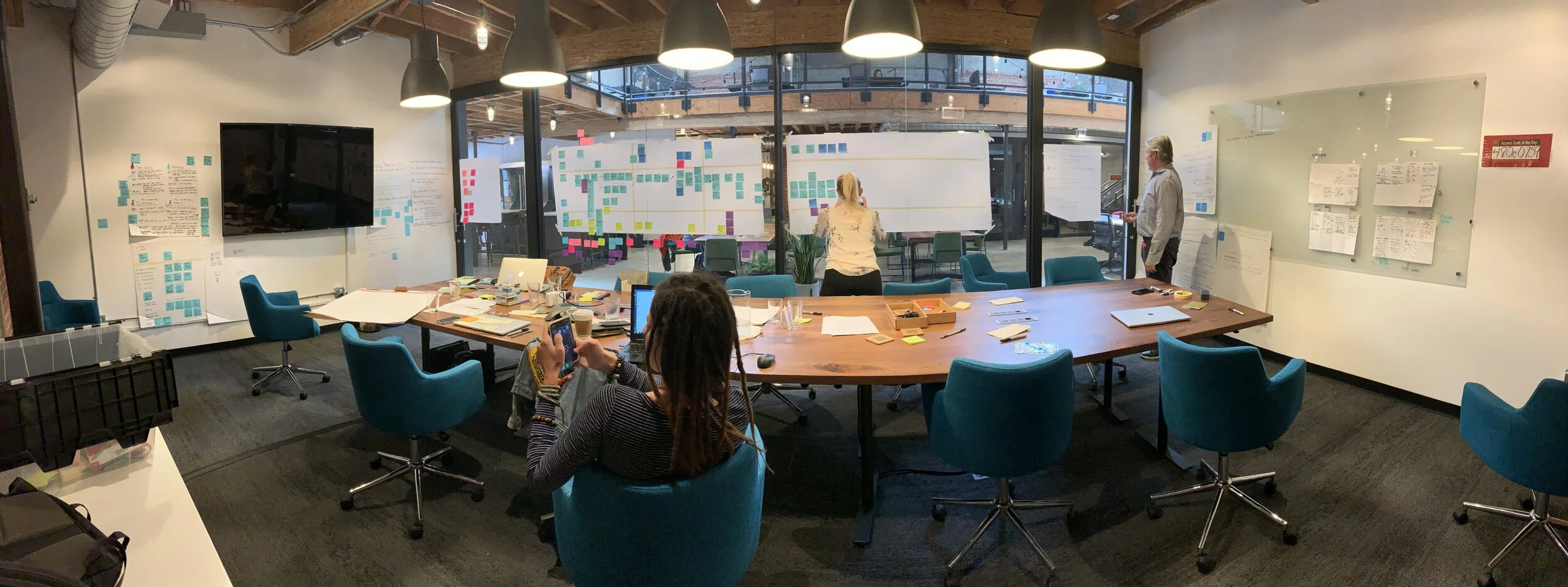Health care
coaching platform for delivering behavioral health interventions
A next-generation clinical platform for remote intervention delivery and case load management paved the way to scale the coaching practice to meet patient demand.
Client objective
Care Coaches relied on a legacy system for delivering behavioral interventions to health plan members. It became an essential mitigating factor for enabling Coach productivity and the business to scale.
Solution
Designed a new Care Team Portal on a stable platform based on understanding Coach work practices, needs and barriers. Redesigned Coaching tools for greater productivity, introduced workflows to eliminate manual tasks and enable Coaches to more effectively work with members.
Research
On-site research with Coaches and Members
Ethnographies: work practices, tools, barriers and needs
Florida: (4 Coaches), Georgia: (1 Coach), Texas: (4 Members, CoCs)
Care Coach journey mapping
Member Journey mapping
Secondary Research
Literature review—Coach Operating Procedures Manual
Clinical Team feedback—Barriers to productivity
Coaches deliver behavioral interventions via Telehealth from their home offices
Coach Persona
Coaches work with health plan members over a period of 4 to 12 months. They assess mental, clinical member data and social determinants of health and coordinate with therapists to create a support team around the member.
Coaches work with members to create a plan that starts with achieving small wins and rebuild self efficacy. Building on wins over time leads to improved health, and more effective use of the health plan services which lowers plan costs of care.
Excerpt from a Coach persona
Care Coach Journey Map
Coaches start each day by reviewing their case load to plan their day.
They review and organize their current case load and prep for assessing/enrolling new members.
They prepare for follow up calls with members in their case load and meet with them to review progress and adapt their coaching plan.
clinincal team productivity barriers
Coaches manage case loads of 60+ members on an admin tool that had been adapted
to accommodate growing coaching responsibilities over time.
Specific, manual workflows for each Health Plan take too much time away from coaching
UI for tracking Case Load, Tasks, and Alerts lacks the ability to search, sort, and filter
The system runs slow, keeps crashing, and loses work
Workarounds are so engrained that daily users of the system don’t realize they are doing them
Solution concepts
Solution concepts were based on Coach needs identified in research, clinical barriers to productivity, a review of Coach standard operating procedures (the basis of day-to-day clinical operations) and guiding principles for a desirable experience.
Guiding Principles for the desired experience
Reduce effort to perform administrative tasks to enable the Care Team to spend more time coaching.
Consolidate communication tasks into a single, consistent process for managing all communications and flexibility to support variations.
Replace manual tasks with workflows. Enable users to override or correct a workflow item without restarting a task from scratch.
Maintain a clear between interaction modes for information related to tasks, alerts, and appointments (both scheduled and deadlines)
Clinical team alignment workshop
FEATURE SCORING AND PRIORITIZATION
FEATURE LIST
Company value drivers were used as criterial for scoring and prioritizing features for the initial release of the Care Team Portal.
• Core features — Essential features to run day-to-day program delivery
• Productivity enhancers—Eliminate manual workflows
• Superpowers— Employ predictive analytics and coach recommendations
Scoring features against company value drivers
Features in the list were scored and prioritized for the initial release
Use cases
Use cases were created for each feature and reviewed with a business analyst to ensure that UI design and system architecture were in alignment.
They were created as a cross-functional team activity that included, the Product designer, Product manager and Clinical team SME.
A feature use case example
Iterative design and build
Wireframes were derived from use cases and provided to the development team with use cases, task flows and other system level diagrams to assist the build.
The member page (mock up below) enables the Coach to see essential member information and their contact history with the ability to pull up notes from earlier member sessions.
Coaches can see and connect with with others on the member’s care team and share notes on the member’s behalf.
The system tracks what stage of the intervention a member is in and presents the coach with actions to take that are relevant to that stage. These trigger workflows and generate tasks for others on the care team, mitigating the need for manual, administrative work, and allowing Coaches to spend more time with members.
Wireframe mock up for a page in the new Coaching Portal
Data Analytics & outcome Reporting
Coaches captured data on member progress against their goals over time in the tool which provided insights into how the program was impacting member health. This along with other data was used for reporting outcomes to health plans.
A history of cross-channel touch points between Coaches, Clinicians and members was collected by the system and provided visibility into type and frequency of services that were being delivered to the member.












